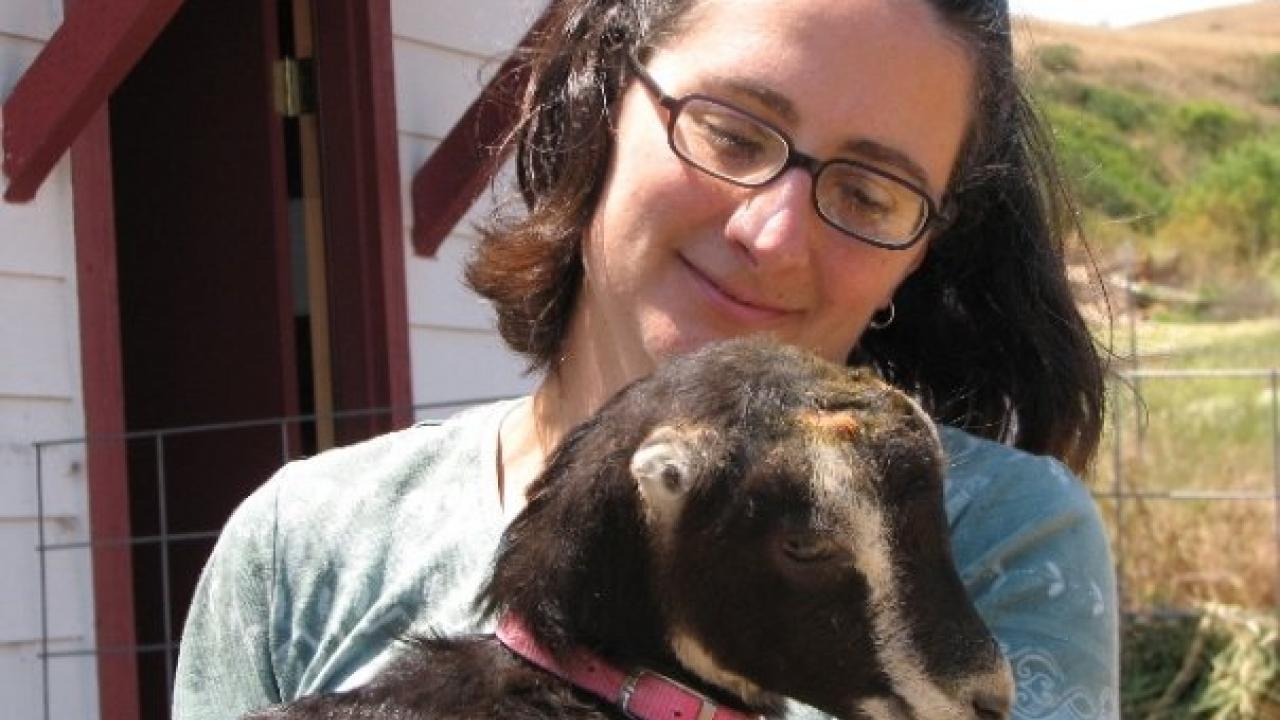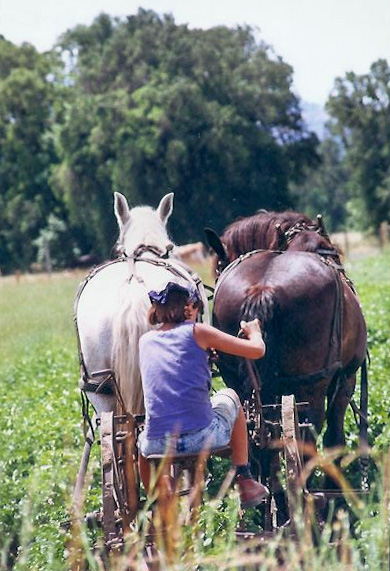
Transformations within Yolo County Agriculture
Anecdotal Observations of a PhD Candidate and Former Small-Scale Farmer
From Farmer to PhD Student
As a former small-scale, diversified farmer (e.g., flowers, vegetables) and goat dairy manager, my deep-rooted agricultural background informs my research as an epidemiology PhD candidate at the University of California, Davis. My dissertation focuses on evaluating the risk of disease transmission in the wildlife-livestock-human interface.
My interest in agriculture began as an Anthropology major at Grinnell College in Grinnell, Iowa, a liberal arts school rooted in the middle of farmland. Although agriculture degrees were not offered, our farming interest club brought speakers to campus and toured farms.
After graduation, I worked on various small farms in California and learned to drive draft horses, grow flowers, and care for livestock. Some of these farms are located in Capay Valley, about a 45-minute drive northwest of UC Davis. Capay Valley is a special farming community that is comprised of many well-known, small-scale organic farms, including RiverDog Farm and Full Belly Farm that feed the Bay Area.
In 2002, my husband became a cheesemaker at Cowgirl Creamery and we moved from Yolo to Sonoma County. During our time there, I managed a small goat dairy during a Q fever outbreak, which caused flu-like symptoms in half of the dairy staff and spontaneous abortions in a majority of the pregnant goats. This experience inspired me to pursue a PhD to conduct research on zoonoses—diseases transmitted from animals to humans— and to assist farmers in reducing risks from zoonotic pathogens.
Dynamic Transformations of Capay Valley Agriculture
My dissertation research is inspired by two dynamic transformations of Capay Valley agriculture that I observed when I returned to Yolo County to begin my epidemiology program in 2014 at UC Davis.
First, there was only one small organic produce farm in Capay Valley that also raised livestock when we moved to Sonoma County in 2002. However, by 2014, most of these small farms had either started raising livestock (e.g., goats, pigs, poultry) or rented sheep to graze vegetable crop fields.
Farmers respond to changing markets and California has been experiencing a widespread resurgence of pasture-raised livestock, due to growing consumer demand for locally-grown, sustainably-raised meat and eggs. Also, as vegetable prices remain static, but agricultural input costs increase, adding animal products helps farmers remain economically viable.
The second observed change was the increase of feral pig populations, a trend observed nationwide. Feral pigs are an economic detriment and food safety nuisance because they destroy crops and intermingle with livestock and are also reservoirs for zoonotic diseases. Feral pigs can transmit diseases to livestock, especially domestic pigs, and humans, including farmworkers.
Consequently, the combination of an increase in pasture-raised pigs and an expanding feral pig population increases the risk of pathogen transmission, which could negatively affect public health and California’s agricultural economy. These intersecting trends demonstrate the dynamic changes that farmers face. My research analyzes the interface of feral pigs and outdoor-raised domestic pigs, as well as compares shared foodborne pathogens between these two populations.
As farmers encounter shifts in the environment and marketplace, research and outreach can benefit them while keeping food safe from farm to fork and protecting public health. My research will be used to create outreach seminars and materials for those that raise livestock near feral pig habitats.
Laura Patterson is a graduate student researcher funded by WCAHS for the Winter 2019 quarter. For more information on her research, contact lpatters@ucdavis.edu.
